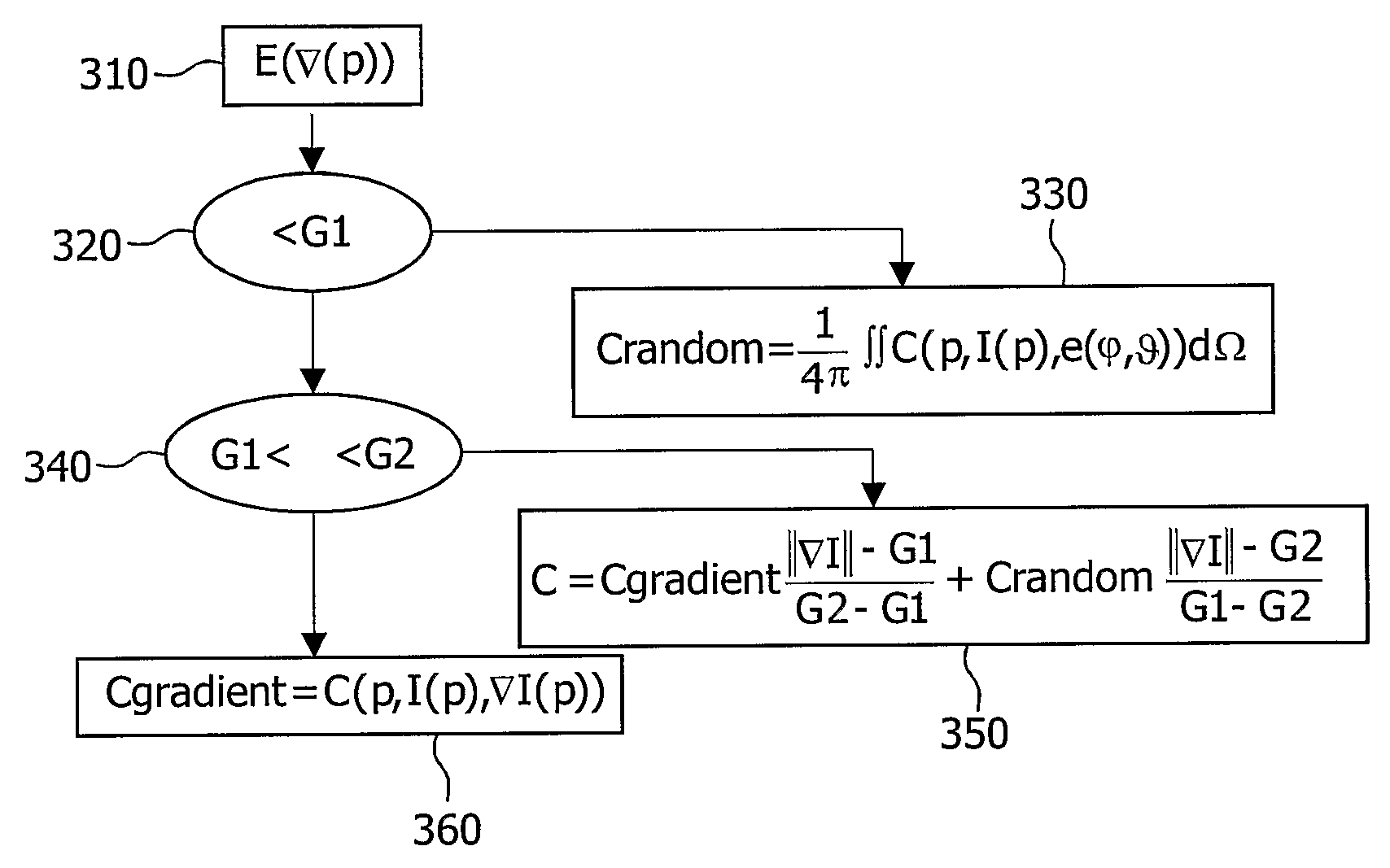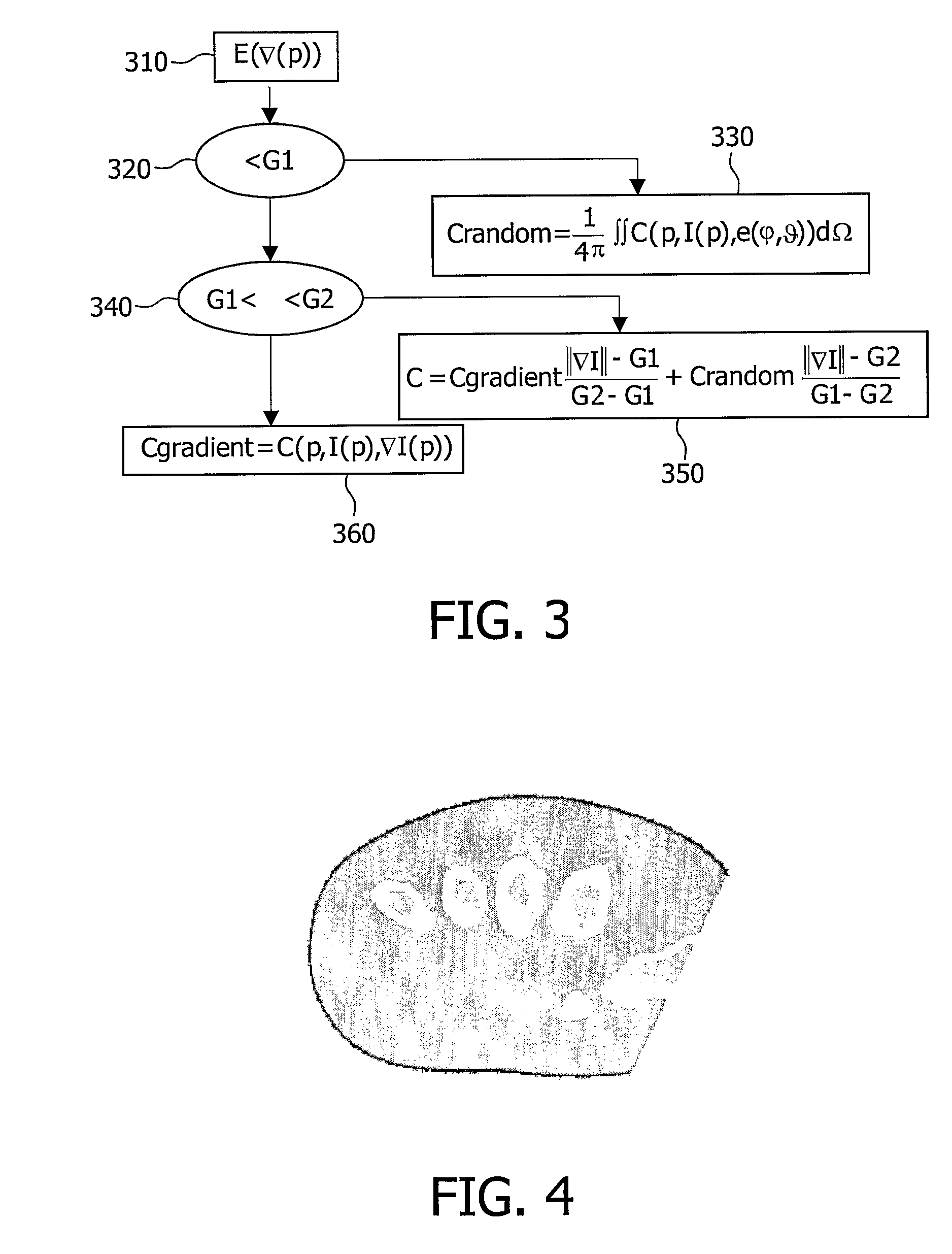Direct Volume Rendering with Shading
a 3d image and volume rendering technology, applied in the field of data processing, can solve the problems of large processing power waste in homogeneous areas, limited knowledge of techniques, and large computation of overall contributions, and achieve the effects of improving user's perception, slow variation, and simplifying computations
- Summary
- Abstract
- Description
- Claims
- Application Information
AI Technical Summary
Benefits of technology
Problems solved by technology
Method used
Image
Examples
Embodiment Construction
[0020] The invention will be described in the context of medical images however one should not limit the scope of the invention to medical applications. The invention clearly encompasses any type of application, which uses the features of the invention, though in remote technical fields where 3D arrays of data are used. For example, the invention would be beneficial to other field like video gaming, meteorology and aeronautic, etc . . .
[0021]FIG. 1 and FIG. 2 represent displays of the internal bone structure of a human hand. The two displays show the fingers' bones skeleton, and the hand's tissue shows up as dark homogenous areas. Homogenous areas are referred as such in contrast with areas where the body structure changes (e.g. bone surfaces boundaries). Both images are based on the same original set of data, obtained for example by X-ray radiation of the person's hand but this original set of data is handled in two different manners and consequently, the displays differ in qualit...
PUM
 Login to View More
Login to View More Abstract
Description
Claims
Application Information
 Login to View More
Login to View More - R&D
- Intellectual Property
- Life Sciences
- Materials
- Tech Scout
- Unparalleled Data Quality
- Higher Quality Content
- 60% Fewer Hallucinations
Browse by: Latest US Patents, China's latest patents, Technical Efficacy Thesaurus, Application Domain, Technology Topic, Popular Technical Reports.
© 2025 PatSnap. All rights reserved.Legal|Privacy policy|Modern Slavery Act Transparency Statement|Sitemap|About US| Contact US: help@patsnap.com



